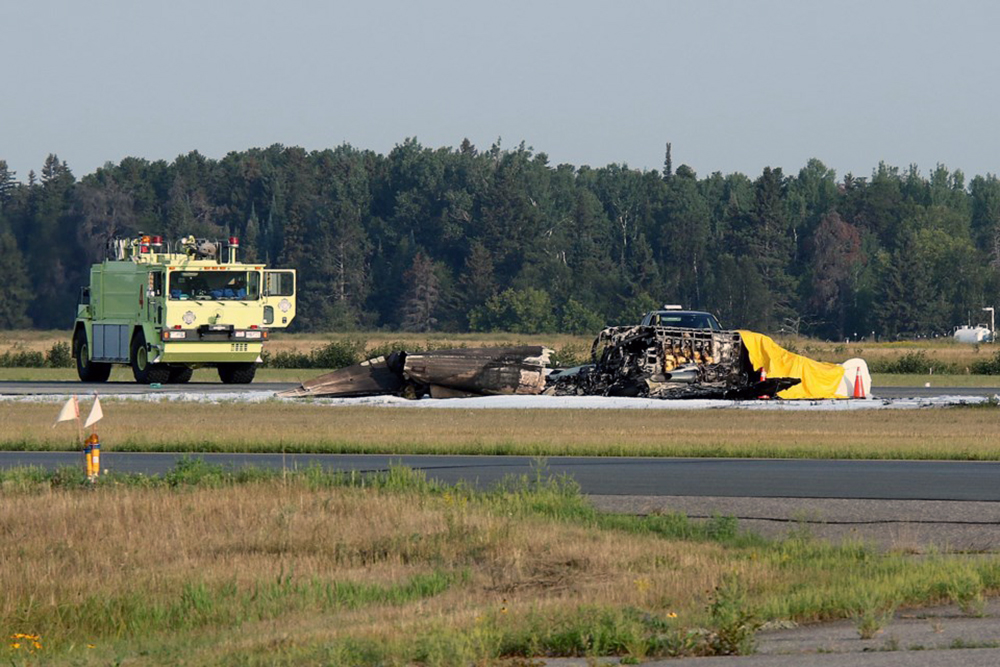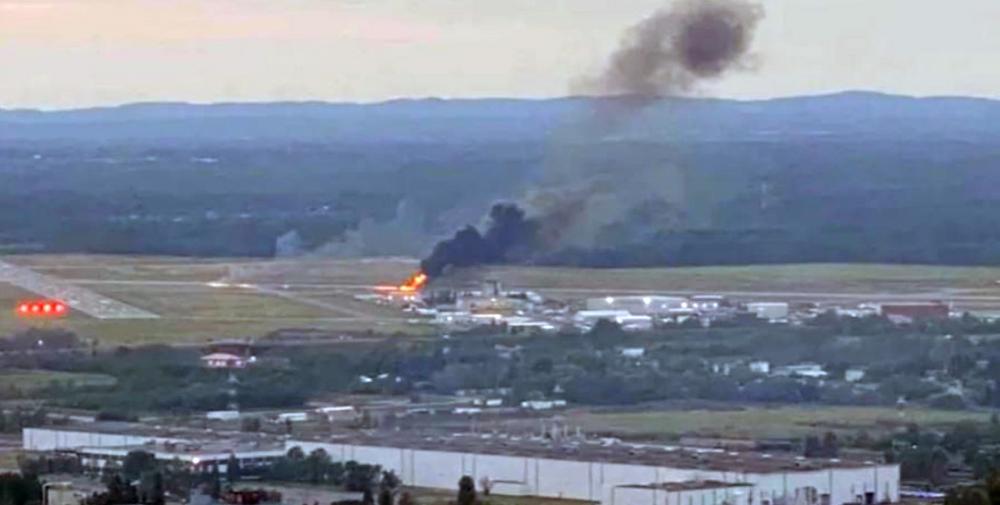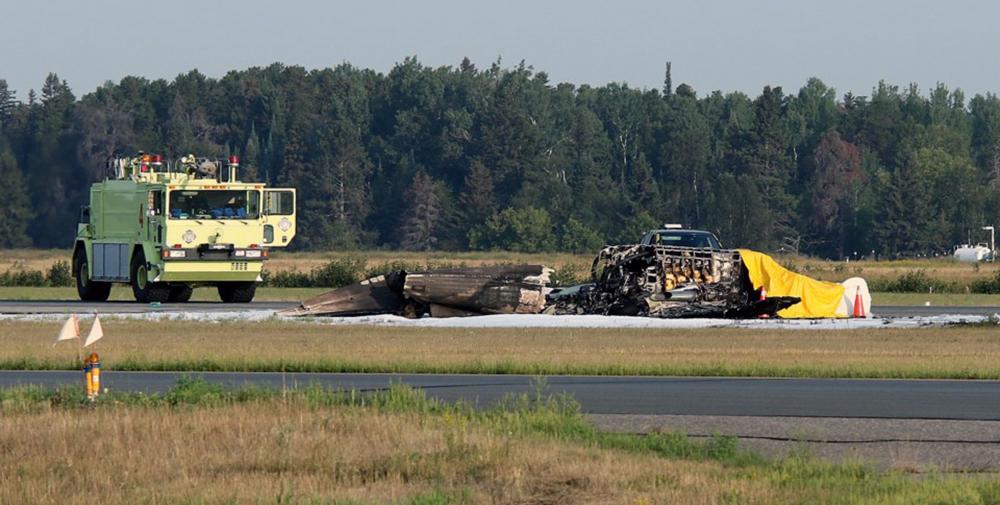Date & Time:
Aug 16, 2021 at 2109 LT
Type of aircraft:
Rockwell Grand Commander 690
Registration:
C-GYLD
Flight Phase:
Takeoff (climb)
Flight Type:
Private
Survivors:
No
Schedule:
Thunder Bay – Dryden
MSN:
690-11426
YOM:
1977
Flight number:
BD160
Country:
Canada
Region:
North America
Crew on board:
1
Crew fatalities:
1
Pax on board:
0
Pax fatalities:
0
Other fatalities:
0
Total fatalities:
1
Captain / Total hours on type:
230
Aircraft flight hours:
7620
Circumstances:
The airplane, operated by MAG Aerospace Canada Corp. as flight BD160, was conducting a visual flight rules flight from Thunder Bay Airport, Ontario, to Dryden Regional Airport, Ontario, with only the pilot on board. At 2109 Eastern Daylight Time, the aircraft began a takeoff on Runway 12. Shortly after rotation, the aircraft entered a left bank, continued to roll, and then struck the surface of Runway 07 in an inverted attitude. The pilot was fatally injured. The aircraft was destroyed by the impact and postimpact fire. The emergency locator transmitter activated on impact.
Probable cause:
Findings as to causes and contributing factors:
1. After takeoff from Runway 12 at Thunder Bay Airport, Ontario, as the pilot conducted a rapid, low-level, climbing steep turn, the aircraft entered an accelerated stall that resulted in a loss of control and subsequent collision with the surface of Runway 07 in an inverted attitude.
2. The decision to conduct the rapid, low-level, climbing steep turn was likely influenced by an altered perception of risk from previous similar takeoffs that did not result in any adverse consequences.
Findings as to risk:
1. If air traffic controllers engage in communications that may be perceived by pilots to encourage unusual flight manoeuvres, pilots may perceive this encouragement as a confirmation that the manoeuvres are acceptable to perform, increasing the risk of an accident.
2. If NAV CANADA’s reporting procedures do not contain specific criteria for situations where air traffic services personnel perceive aircraft to be conducting unsafe flight manoeuvres, there is a risk that these manoeuvres will continue and result in an accident.
Other findings
1. Most of the wires that comprised the elevator trim cable failed before the impact as a result of excessive wear; however, this did not contribute to the occurrence because the trim tab remained in the normal take-off position.
1. After takeoff from Runway 12 at Thunder Bay Airport, Ontario, as the pilot conducted a rapid, low-level, climbing steep turn, the aircraft entered an accelerated stall that resulted in a loss of control and subsequent collision with the surface of Runway 07 in an inverted attitude.
2. The decision to conduct the rapid, low-level, climbing steep turn was likely influenced by an altered perception of risk from previous similar takeoffs that did not result in any adverse consequences.
Findings as to risk:
1. If air traffic controllers engage in communications that may be perceived by pilots to encourage unusual flight manoeuvres, pilots may perceive this encouragement as a confirmation that the manoeuvres are acceptable to perform, increasing the risk of an accident.
2. If NAV CANADA’s reporting procedures do not contain specific criteria for situations where air traffic services personnel perceive aircraft to be conducting unsafe flight manoeuvres, there is a risk that these manoeuvres will continue and result in an accident.
Other findings
1. Most of the wires that comprised the elevator trim cable failed before the impact as a result of excessive wear; however, this did not contribute to the occurrence because the trim tab remained in the normal take-off position.
Final Report:
C-GYLD.pdf741.42 KB








